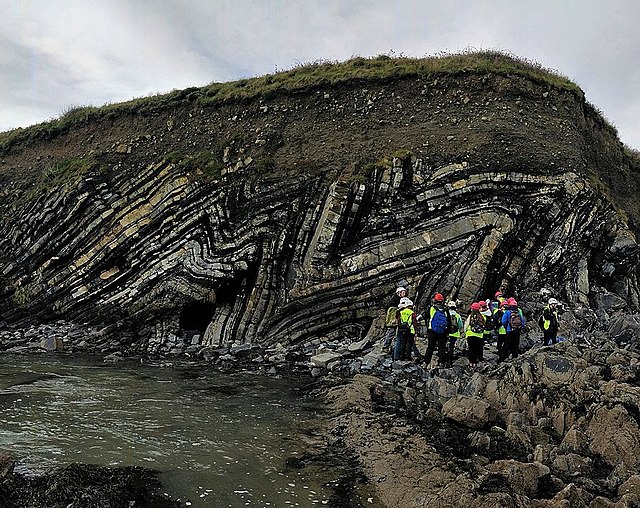In structural geology, an anticline is a type of fold that is an arch-like shape and has its oldest beds at its core, whereas a syncline is the inverse of an anticline. A typical anticline is convex up in which the hinge or crest is the location where the curvature is greatest, and the limbs are the sides of the fold that dip away from the hinge. Anticlines can be recognized and differentiated from antiforms by a sequence of rock layers that become progressively older toward the center of the fold. Therefore, if age relationships between various rock strata are unknown, the term antiform should be used.
Anticline exposed in road cut (small syncline visible at far right). Note the man standing in front of the formation, for scale. New Jersey, U.S.
Anticline near Ehden, Lebanon
Castlemaine Anticlinal Fold
Harpea's Cave in southern France
In structural geology, a fold is a stack of originally planar surfaces, such as sedimentary strata, that are bent or curved ("folded") during permanent deformation. Folds in rocks vary in size from microscopic crinkles to mountain-sized folds. They occur as single isolated folds or in periodic sets. Synsedimentary folds are those formed during sedimentary deposition.
Folds of alternate layers of limestone and chert occur in Greece. The limestone and chert were originally deposited as flat layers on the floor of a deep sea basin. These folds were produced by Alpine deformation.
Kink band folds in the Permian of New Mexico, USA
Rainbow Basin syncline in the Barstow Formation near Barstow, California
Chevron folds, Ireland








